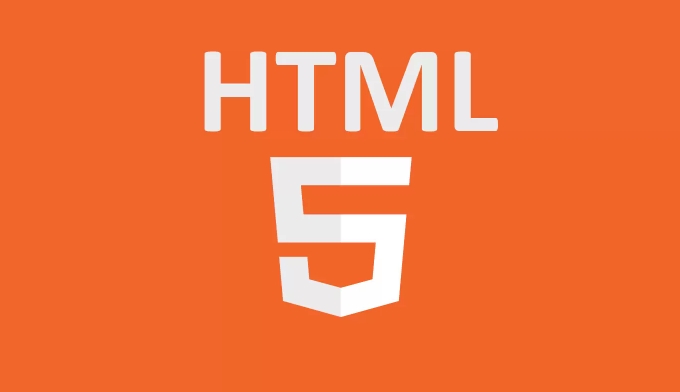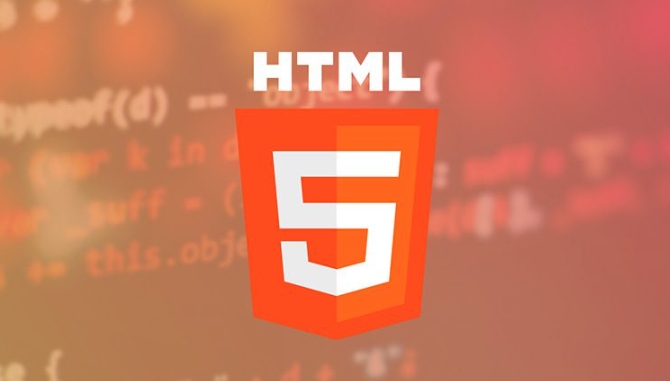What are the key differences between HTML4 and HTML5?
Jul 03, 2025 am 02:11 AMHTML5 has significantly improved semantic tags, multimedia support, form functionality and local storage compared to HTML4. 1. HTML5 introduces more semantic tags such as

The difference between HTML4 and HTML5 is actually quite obvious, especially in terms of function extension, tag semantics and support for modern web page requirements. HTML5 has been optimized and enhanced in many aspects, making development more efficient and more suitable for the current Web development.

1. Clearer semantic tags
HTML4 uses mostly common tags, such as <div> and <code><span></span> to divide page structure, while HTML5 introduces more descriptive tags, such as: 
-
<header></header>means the header of the page -
<nav></nav>means navigation bar -
<article></article>means independent content block -
<section></section>means content block -
<footer></footer>means bottom information
These tags not only make the code easier to understand, but also help aid tools such as SEO and screen readers to better parse page structure.
2. Natively support multimedia elements
In HTML4, embedding audio or video often requires relying on third-party plugins (such as Flash), and HTML5 provides native support:

-
<audio></audio>tags can be inserted directly into audio files -
<video></video>tag can play videos, and it also supports control bars, automatic playback and other functions.
The advantage of this is that there is no need to introduce additional plugins, which improves compatibility and loading speed, especially on mobile devices.
3. Form input type and verification enhancement
HTML5 supports forms more powerfully, and has added many new input types, such as:
-
<input type="email">Email format verification -
<input type="date">Date selector -
<input type="number">Number input box -
<input type="search">Search box style optimization
At the same time, HTML5 also provides a simple client verification mechanism, such as required attribute, which allows the browser to check whether the content has been filled in before submitting, reducing JavaScript dependency.
4. Offline applications and local storage support
HTML5 introduces Application Cache and local storage mechanisms (localStorage and sessionStorage), so that web pages can continue to run without a network connection, and data can be retained after the user closes the page. This is very useful when developing web applications, such as making some offline notes, caching resources, etc.
In contrast, HTML4 has almost no ability in this area and can only rely on cookies to store a small amount of data, and it will be carried with you every time you request it, which is not very efficient.
Basically these key differences. HTML5 not only simplifies the development process, but also improves user experience and performance, which is the main reason why it gradually replaces HTML4.
The above is the detailed content of What are the key differences between HTML4 and HTML5?. For more information, please follow other related articles on the PHP Chinese website!

Hot AI Tools

Undress AI Tool
Undress images for free

Undresser.AI Undress
AI-powered app for creating realistic nude photos

AI Clothes Remover
Online AI tool for removing clothes from photos.

Clothoff.io
AI clothes remover

Video Face Swap
Swap faces in any video effortlessly with our completely free AI face swap tool!

Hot Article

Hot Tools

Notepad++7.3.1
Easy-to-use and free code editor

SublimeText3 Chinese version
Chinese version, very easy to use

Zend Studio 13.0.1
Powerful PHP integrated development environment

Dreamweaver CS6
Visual web development tools

SublimeText3 Mac version
God-level code editing software (SublimeText3)

Hot Topics
 What is Microdata? HTML5 Explained
Jun 10, 2025 am 12:09 AM
What is Microdata? HTML5 Explained
Jun 10, 2025 am 12:09 AM
MicrodataenhancesSEOandcontentdisplayinsearchresultsbyembeddingstructureddataintoHTML.1)Useitemscope,itemtype,anditempropattributestoaddsemanticmeaning.2)ApplyMicrodatatokeycontentlikebooksorproductsforrichsnippets.3)BalanceusagetoavoidclutteringHTML
 HTML5 Microdata: The best online tools
Jun 09, 2025 am 12:06 AM
HTML5 Microdata: The best online tools
Jun 09, 2025 am 12:06 AM
ThebestonlinetoolsforHTML5MicrodataareGoogleStructuredDataMarkupHelperandSchema.org'sMarkupValidator.1)GoogleStructuredDataMarkupHelperisuser-friendly,guidinguserstoaddMicrodatatagsforenhancedSEO.2)Schema.org'sMarkupValidatorchecksMicrodataimplementa
 Microdata in HTML5: The Key to Better Search Engine Ranking
Jun 12, 2025 am 10:22 AM
Microdata in HTML5: The Key to Better Search Engine Ranking
Jun 12, 2025 am 10:22 AM
MicrodatasignificantlyimprovesSEObyenhancingsearchengineunderstandingandrankingofwebpages.1)ItaddssemanticmeaningtoHTML,aidingbetterindexing.2)Itenablesrichsnippets,increasingclick-throughrates.3)UsecorrectSchema.orgvocabularyandkeepitupdated.4)Valid
 HTML5 goals: A quick start guide
May 18, 2025 am 12:18 AM
HTML5 goals: A quick start guide
May 18, 2025 am 12:18 AM
HTML5aimstoimprovewebaccessibility,efficiency,andinteractivityforbothusersanddevelopers.1)Itreducestheneedforexternalpluginsbysupportingnativemultimedia.2)Itenhancessemanticstructurewithnewelements,improvingSEOandcodereadability.3)Itimprovesformhandl
 Handling reconnections and errors with HTML5 Server-Sent Events.
Jul 03, 2025 am 02:28 AM
Handling reconnections and errors with HTML5 Server-Sent Events.
Jul 03, 2025 am 02:28 AM
When using HTML5SSE, the methods to deal with reconnection and errors include: 1. Understand the default reconnection mechanism. EventSource retrys 3 seconds after the connection is interrupted by default. You can customize the interval through the retry field; 2. Listen to the error event to deal with connection failure or parsing errors, distinguish error types and execute corresponding logic, such as network problems relying on automatic reconnection, server errors manually delay reconnection, and authentication failure refresh token; 3. Actively control the reconnection logic, such as manually closing and rebuilding the connection, setting the maximum number of retry times, combining navigator.onLine to judge network status to optimize the retry strategy. These measures can improve application stability and user experience.
 What are the key features introduced in HTML5?
Jun 19, 2025 pm 11:57 PM
What are the key features introduced in HTML5?
Jun 19, 2025 pm 11:57 PM
HTML5introducedkeyfeaturesthattransformedwebdevelopment.1.Semanticelementslike,,andimprovedstructure,readability,andaccessibility.2.Nativemultimediasupportviaandtagseliminatedrelianceonplugins.3.Enhancedformcontrolsincludingtype="email"andr
 What Were the Aims of HTML5? A Comprehensive Overview
May 18, 2025 am 12:17 AM
What Were the Aims of HTML5? A Comprehensive Overview
May 18, 2025 am 12:17 AM
The goal of HTML5 is to improve the semantic structure of web pages, enhance multimedia support, and ensure cross-platform compatibility. 1) Improve the accessibility and structure of web pages by introducing semantic elements such as, etc. 2) Use and elements to simplify multimedia embedding and reduce dependence on plug-ins. 3) Through responsive design and CSS3, cross-device compatibility and user experience optimization are achieved.
 HTML5 Input types: does it improve accessibility?
Jun 20, 2025 am 12:49 AM
HTML5 Input types: does it improve accessibility?
Jun 20, 2025 am 12:49 AM
Yes,HTML5inputtypesimproveaccessibilitybyprovidingsemanticmeaningtoassistivetechnologies.1)Emailinputtypeoptimizeskeyboarddisplayandscreenreaderannouncements.2)Dateinputtypeoffersacalendarwidget,aidinguserswithmotordisabilitiesandensuringconsistentda






